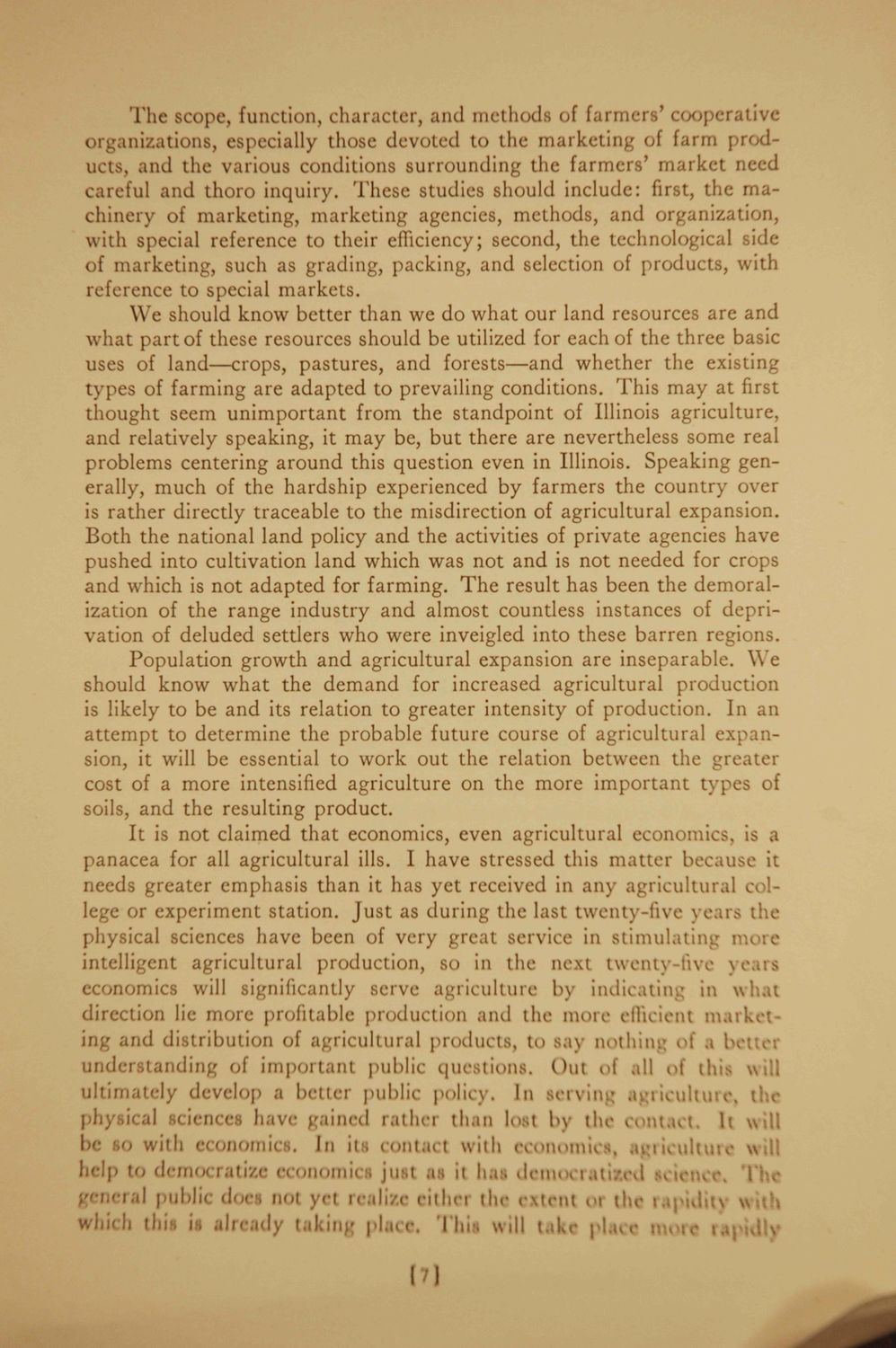| |
| |
Caption: Booklet - Agricultural College and Experiment Station (1924)
This is a reduced-resolution page image for fast online browsing.

EXTRACTED TEXT FROM PAGE:
The si pe, function, character, and methods of farraei ' cooj ei iv organizations, especially those devoted to the marketing of farm [ dUCtS, and the various conditions surrounding the farmers' market need careful and thoro inquiry. These studies should include: first, the machinery of marketing, marketing agencies, methods, and organization, with special reference to their efficiency; second, the technological side of marketing, such as grading, packing, and selection of products, with reference to special markets. We should know better than we do what our land resources are and what part of these resources should be utilized for each of the three basic uses of land—crops, pastures, and forests—and whether the existing types of farming are adapted to prevailing conditions. This may at first thought seem unimportant from the standpoint of Illinois agriculture and relatively speaking, it may be, but there are nevertheless some real problems centering around this question even in Illinois. Speaking generally, much of the hardship experienced by farmers the country over is rather directly traceable to the misdirection of agricultural expansion. Both the national land policy and the activities of private agencies have pushed into cultivation land which was not and is not needed for crops and which is not adapted for farming. The result has been the demoralization of the range industry and almost countless instances of deprivation of deluded settlers who were inveigled into these barren regions. Population growth and agricultural expansion are inseparable. We should know what the demand for increased agricultural production is likely to be and its relation to greater intensity of production. In an attempt to determine the probable future course of agricultural expansion, it will be essential to work out the relation between the greater cost of a more intensified agriculture on the more important types of soils, and the resulting product. It is not claimed that economics, even agricultural economics, is a panacea for all agricultural ills. I have stressed this matter because it needs greater emphasis than it has yet received in any agricultural college or experiment station. Just as during the last twenty-five years tl physical sciences have been of very great service in stimulating intelligent agricultural production, so in the next twenty live \ s economics will significantly serve agriculture b) iiuiieatin in w at direction lie more profitable production and the more efficient m. ing and distribution of agricultural products, to say nothin indri .landing of important public questions. Out i>t all iltimately develop a better public policy. In serving a I this w ;u physical SCieO s have r u n I ratlin than lost by the i h will I 80 with i onomi< In ii . cent I with ev no mi i icult c w help t mLtize - onomics just as it has ilrm tut 1 i I public docs not • i real eithci the extent i the ra| )w which tint in already taking pla< Tim will tak pla ro i II
| |